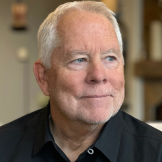There comes a moment in nearly every executive’s journey, a point where the burden of responsibility grows too great, where even the most technically exceptional leader stares into the abyss of self-doubt and fears unraveling under the spotlight. Many call this the “leadership breaking point.” Yet, too often, organizations underestimate not only its inevitability, but the hidden, career-changing possibilities it offers for both the leader and their teams.
In my experience, this critical juncture is not merely the result of external pressures or increased complexity. It often reflects a deeper misalignment between an executive’s authentic personality and identity, and the burden of leadership. Even highly qualified executives, with impressive credentials and years of experience, find themselves caught in cycles of self-critique, imposter syndrome, and the silent terror of “being found out.” Performance suffers, and decision-making suffers, as the demands begin to outpace internal resources and the ability to make informed decisions.
This isn’t about offering a quick fix. It means slowing down and helping leaders recognize the hidden thoughts and patterns that cause stress and hold them back. This requires a process of sincere reflection and purposeful reorientation, guided by an honest conversation designed to expose both pressures and hidden strengths.
In my work, a three-part approach has repeatedly opened doors. First, making subconscious pressures visible. Secondly, providing objective and factual counterweights to self-perceived inadequacies. And third, helping executive create a new frameworks for emotional management.
These moments of vulnerability do not diminish leadership; they are its turning point. Leaders willing to confront their limitations from a place of humility and curiosity find themselves embarked on a journey well beyond technical “fixes.” Their growth springs from authenticity by embracing who they are, not just what they do, as the foundation for every decision. Ironically, those who once felt most fragile and vulnerable at the breaking point discover resilience unavailable through conventional executive coaching or development.
I have witnessed how that outcome becomes lasting. Leaders who move beyond the breaking point set healthier boundaries, rediscover their focus, and unlock a sustainable pace for themselves and their organizations. Most importantly, they become ambassadors for a new model of leadership and one that prizes integrity, transparency, and self-awareness even during crisis. They model that true leadership is less about mastering chaos from the outside and more about mastering oneself from the inside.
In the end, the leadership breaking point is not a sign of failure, but of readiness. Readiness to evolve, readiness to find a new direction defined by character and clarity, rather than just competence and technical skills. When executives receive the right interventions and support at this crucial moment, not only do they recover, but they also inspire positive change across their teams and industries.
Never fear the breaking point as something to avoid, but as the moment that makes true leadership possible, from self-discovery to inspiring others.



